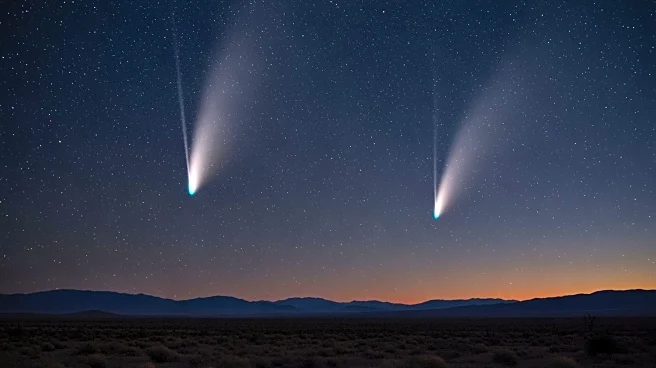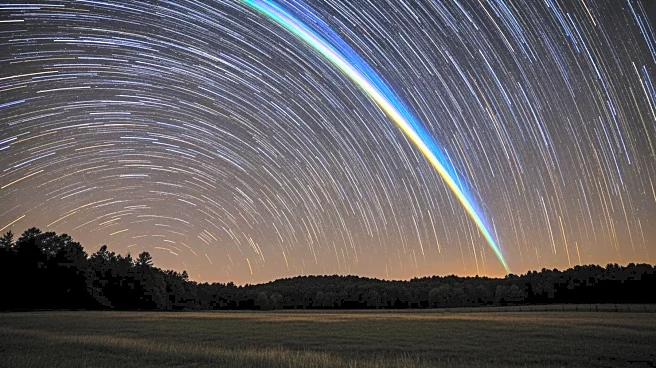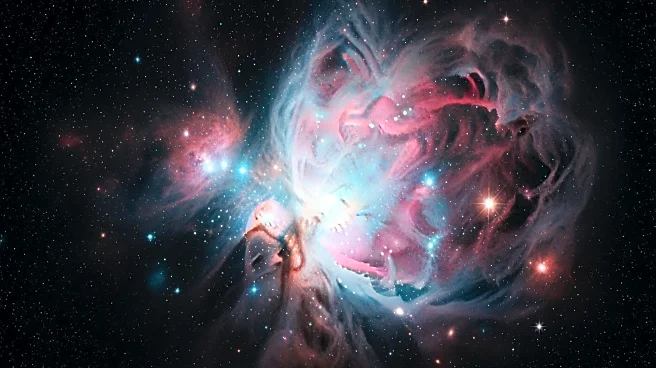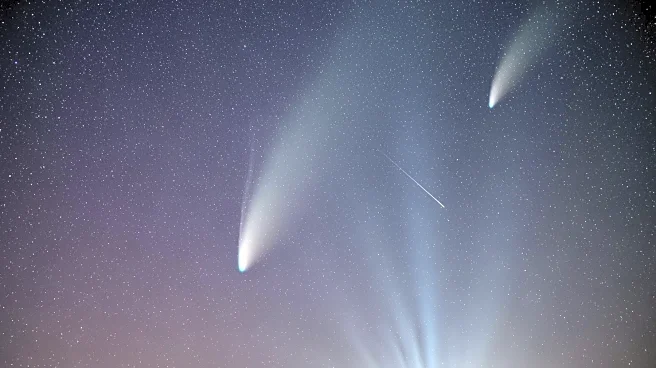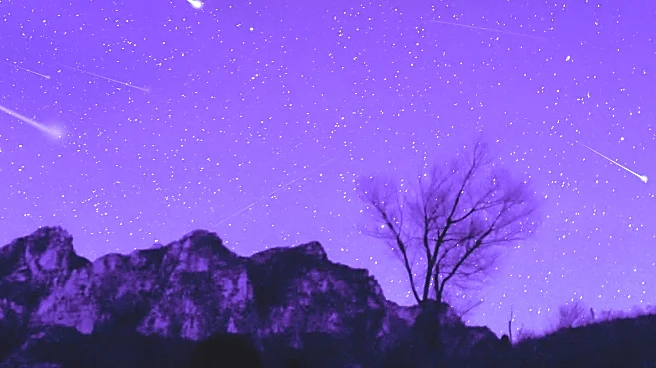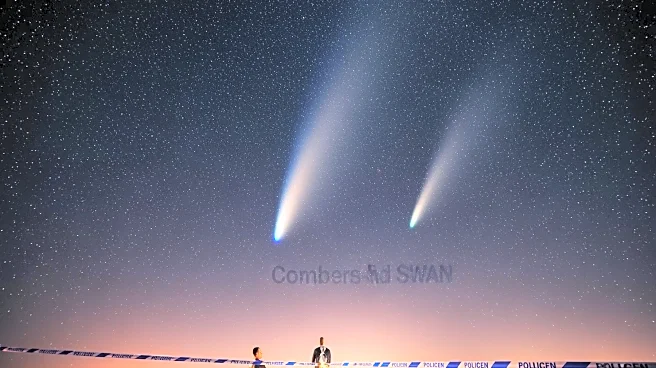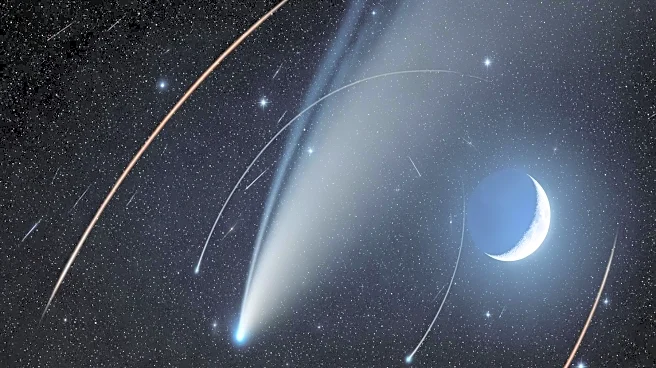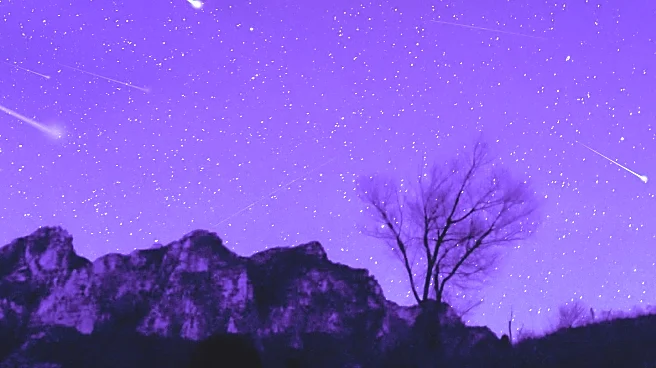What's Happening?
Two rare comets, Lemmon and SWAN, are set to be visible in the skies over Idaho, Utah, and Washington tonight. Comet Lemmon, which will appear brighter, can be seen in the northwest/western sky, while
Comet SWAN, smaller and less bright, will be visible in the southwest sky with the aid of binoculars or a telescope. The comets are at peak brightness, offering a unique opportunity for stargazers. Weather conditions and light pollution will affect visibility, so viewers are advised to find locations with minimal light interference. Additionally, the Orionid meteor shower is reaching its peak, potentially offering sightings of shooting stars.
Why It's Important?
The visibility of two comets simultaneously is a rare astronomical event, providing a unique opportunity for enthusiasts and scientists alike to observe celestial phenomena. This occurrence can stimulate interest in astronomy and science education, encouraging public engagement with space exploration. The event also highlights the importance of preserving dark skies, as light pollution can hinder the observation of such natural spectacles. Communities in Idaho, Utah, and Washington may experience increased tourism and local economic activity as people travel to optimal viewing locations.
What's Next?
As the comets continue their journey, astronomers and enthusiasts will monitor their paths and brightness. The Orionid meteor shower, peaking alongside the comet visibility, will continue to offer opportunities for observation. Local communities may organize viewing events or educational programs to capitalize on public interest. The comets' visibility will gradually decrease, and future astronomical events will be anticipated by the scientific community and the public.
Beyond the Headlines
The event underscores the importance of addressing light pollution, which can significantly impact the ability to observe celestial events. It also highlights the role of technology in enhancing our understanding of space, as cameras can capture light invisible to the naked eye, aiding in the observation of distant objects. This phenomenon may inspire discussions on the cultural significance of astronomy and its role in human history.


